The Catalyst Killing - [37]
I immediately promised that she would be back by half past five, and that I would drive her straight to the office on our return from Valdres.
Miriam Filtvedt Bentsen let out a peculiar peal of laughter, and said that it would perhaps be better for her career in the party if she was dropped a couple of blocks away, given that it was a police car – but that she would, on that condition, be able to come. We agreed that I would pick her up outside Sogn Halls of Residence at half past eight the following morning. Then we put the phone down at almost the same time – and, it seemed, in equally good spirits.
XIII
It was only a few minutes after I had finished the conversation with Miriam Filtvedt Bentsen that it struck me that I should perhaps also check whether the farmer, Henry Alfred Lien, would be there. Directory enquiries were able to give me his number. He answered the telephone when I rang, but was not particularly friendly. His voice was monotone, hard and serious; it sounded as if he had not laughed since 1945.
I explained my errand, assured him that he was not a suspect in any way, but said that I hoped that he would be able to answer a few questions tomorrow in connection with the disappearance of Falko Reinhardt and the death of Marie Morgenstierne.
Henry Alfred Lien was not as negative as I had feared, given the reports of his behaviour in 1968, but it was not a jolly conversation all the same. He had nothing to hide, he said, and was fed up of being accused of things he had not done. He had seen a photograph of the young lady in the paper and thought it was a great shame, but did not understand how he could be of any help in the matter. He had never met the woman and had never been in contact with her.
In the end, however, he agreed to meet me for half an hour around lunch time, on the rather peculiar condition that I did not come in a police car. His reputation in the parish was already bad enough, and gossip could spread like wildfire from farm to farm; he said this without the slightest inkling of humour. He then added that of course he did not want to be associated with the case in the media in any way.
Relieved, I assured him that that would not happen. Henry Alfred Lien gave me some brief instructions as to how to find the farm and repeated that he doubted he had anything of interest to tell – but, he concluded, as I was a policeman and was coming all the way from Oslo, it was only right to meet me.
Towards the end of the third day of the investigation, I felt a growing unease. But I did not think that I could do anything more of value that evening, so in anticipation of my trip the following morning, I called it a day at around ten o’clock.
Two busy days of investigation had taken more of a toll than I had noticed: having watched the news while half asleep on the sofa, I went to bed and was asleep by a quarter to eleven on Friday, 7 August.
But then I woke up with a jolt at two in the morning – as the woman from the Lijord Line was running for her life towards me and the train. When I saw her coming towards me in my dream, I thought at first that it was Miriam Filtvedt Bentsen, but then saw that it was in fact Kristine Larsen who was staring at me in panic through the window.
Luckily, I woke up before she was also shot. But I did lie there for the next thirty minutes or so pondering the meaning of the dream, and what Patricia had said. And suddenly I got the strange and uncomfortable feeling that she might be right: it did feel as though there was a great storm brewing – but I had no idea where it might come from, or who would be hit.
DAY FOUR: An interesting trip to the mountains – and another running woman
I
My working day started unusually early on Saturday, 8 August. I got out of bed at a quarter past seven, and twenty minutes later was sitting at the breakfast table. Dagbladet expressed disquiet at the situation in South Vietnam and feared that the changes necessary there would not happen as long as the USA continued to support the corrupt regime. Morgenbladet, on the other hand, printed a critical commentary on the dictatorship in North Vietnam and was concerned that many more lives would be lost if the USA did not get the support it needed to continue its heroic war effort.
For want of any new developments, the murder of Marie Morgenstierne had fallen out of the headlines – which suited me very well for the moment. I hastily pushed the papers to one side after reading a scathing article in Aftenposten about a Swedish policewoman who had fallen head over heels in love with a well-known criminal. He had been arrested following a police raid on the policewoman’s flat, and she was now on indeterminate sick leave. The article prompted unfortunate memories in me, but was a useful reminder of just how serious these matters could be.
At a quarter to eight, I was therefore eager to start my working day. It occurred to me that I should at least inform Marie Morgenstierne’s father of what had happened so far.
I got hold of Martin Morgenstierne at home at ten to eight. He said that he was on his way to the bank, but asked if there was any news about the murder investigation or if there were any more questions he could answer.
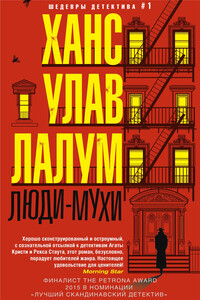
Убит бывший лидер норвежского Сопротивления и бывший член кабинета министров Харальд Олесен. Его тело обнаружено в запертой квартире, следов взлома нет, орудие убийства отсутствует. На звук выстрела к двери Олесена сбежались все соседи, но никого не увидели. Инспектор уголовного розыска Колбьёрн Кристиансен считает, что убийство, скорее всего, совершил кто-то из них. Более того, он полагает, что их показания лживы.
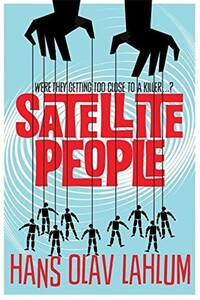
A gripping, evocative, and ingenious mystery which pays homage to Agatha Christie, Satellite People is the second Norwegian mystery in Hans Olav Lahlum's series. Oslo, 1969: When a wealthy man collapses and dies during a dinner party, Norwegian Police Inspector Kolbjorn Kristiansen, known as K2, is left shaken. For the victim, Magdalon Schelderup, a multimillionaire businessman and former resistance fighter, had contacted him only the day before, fearing for his life. It soon becomes clear that every one of Schelderup's 10 dinner guests is a suspect in the case.
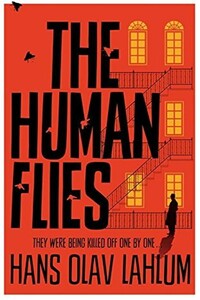
Oslo, 1968: ambitious young detective Inspector Kolbjorn Kristiansen is called to an apartment block, where a man has been found murdered. The victim, Harald Olesen, was a legendary hero of the Resistance during the Nazi occupation, and at first it is difficult to imagine who could have wanted him dead. But as Detective Inspector Kolbjorn Kristiansen (known as K2) begins to investigate, it seems clear that the murderer could only be one of Olesen's fellow tenants in the building. Soon, with the help of Patricia – a brilliant young woman confined to a wheelchair following a terrible accident – K2 will begin to untangle the web of lies surrounding Olesen's neighbors; each of whom, it seems, had their own reasons for wanting Olesen dead.
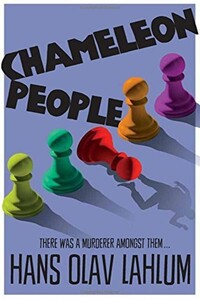
From the international bestselling author, Hans Olav Lahlum, comes Chameleon People, the fourth murder mystery in the K2 and Patricia series.1972. On a cold March morning the weekend peace is broken when a frantic young cyclist rings on Inspector Kolbjorn 'K2' Kristiansen's doorbell, desperate to speak to the detective.Compelled to help, K2 lets the boy inside, only to discover that he is being pursued by K2's colleagues in the Oslo police. A bloody knife is quickly found in the young man's pocket: a knife that matches the stab wounds of a politician murdered just a few streets away.The evidence seems clear-cut, and the arrest couldn't be easier.
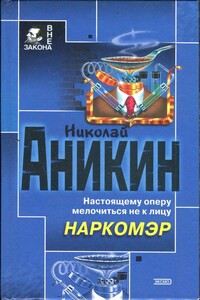
Тупик. Стена. Старый кирпич, обрывки паутины. А присмотреться — вроде следы вокруг. Может, отхожее место здесь, в глухом углу? Так нет, все чисто. Кто же сюда наведывается и зачем? И что охраняет тут охрана? Да вот эту стену и охраняет. Она, как выяснилось, с секретом: время от времени отъезжает в сторону. За ней цех. А в цеху производят под видом лекарства дурь. Полковник Кожемякин все это выведал. Но надо проникнуть внутрь и схватить за руку отравителей, наживающихся на здоровье собственного народа. А это будет потруднее…
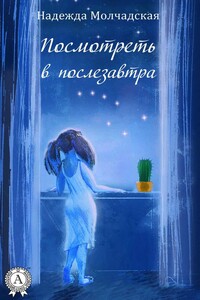
«Посмотреть в послезавтра» – остросюжетный роман-триллер Надежды Молчадской, главная изюминка которого – атмосфера таинственности и нарастающая интрига.Девушка по имени Венера впадает в кому при загадочных обстоятельствах. Спецслужбы переправляют ее из закрытого городка Нигдельск в Москву в спецклинику, где известный ученый пытается понять, что явилось причиной ее состояния. Его исследования приводят к неожиданным результатам: он обнаруживает, что их связывает тайна из его прошлого.
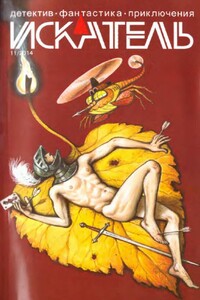
«ИСКАТЕЛЬ» — советский и российский литературный альманах. Издаётся с 1961 года. Публикует фантастические, приключенческие, детективные, военно-патриотические произведения, научно-популярные очерки и статьи. В 1961–1996 годах — литературное приложение к журналу «Вокруг света», с 1996 года — независимое издание.В 1961–1996 годах выходил шесть раз в год, в 1997–2002 годах — ежемесячно; с 2003 года выходит непериодически.Содержание:Анатолий Королев ПОЛИЦЕЙСКИЙ (повесть)Олег Быстров УКРАДИ МОЮ ЖИЗНЬ (окончание) (повесть)Владимир Лебедев ГОСТИ ИЗ НИОТКУДА.
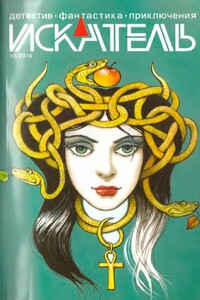
«ИСКАТЕЛЬ» — советский и российский литературный альманах. Издается с 1961 года. Публикует фантастические, приключенческие, детективные, военно-патриотические произведения, научно-популярные очерки и статьи. В 1961–1996 годах — литературное приложение к журналу «Вокруг света», с 1996 года — независимое издание.В 1961–1996 годах выходил шесть раз в год, в 1997–2002 годах — ежемесячно; с 2003 года выходит непериодически.Содержание:Олег Быстров УКРАДИ МОЮ ЖИЗНЬ (повесть);Петр Любестовский КЛЕТКА ДЛЯ НУТРИИ (повесть)
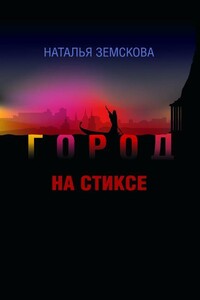
Наталья Земскова — журналист, театральный критик. В 2010 г. в издательстве «Астрель» (Санкт-Петербург) вышел её роман «Детородный возраст», который выдержал несколько переизданий. Остросюжетный роман «Город на Стиксе» — вторая книга писательницы. Молодая героиня, мечтает выйти замуж и уехать из забитого новостройками областного центра. Но вот у неё на глазах оживают тайны и легенды большого губернского города в центре России, судьбы талантливых людей, живущих рядом с нею. Роман «Город на Стиксе» — о выборе художника — провинция или столица? О том, чем рано или поздно приходится расплачиваться современному человеку, не верящему ни в Бога, ни в черта, а только в свой дар — за каждый неверный шаг.
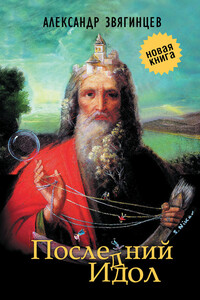
В сборник «Последний идол» вошли произведения Александра Звягинцева разных лет и разных жанров. Они объединены общей темой исторической памяти и личной ответственности человека в схватке со злом, которое порой предстает в самых неожиданных обличиях. Публикуются рассказы из циклов о делах следователей Багринцева и Северина, прокуроров Ольгина и Шип — уже известных читателям по сборнику Звягинцева «Кто-то из вас должен умереть!» (2012). Впервые увидит свет пьеса «Последний идол», а также цикл очерков писателя о событиях вокруг значительных фигур общественной и политической жизни России XIX–XX веков — от Петра Столыпина до Солженицына, от Александра Керенского до Льва Шейнина.